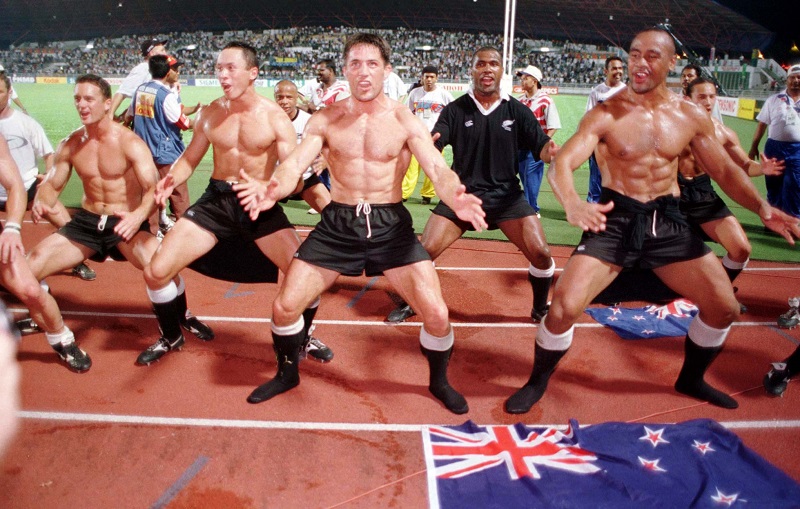By Brendan Gallagher
The passage of time can play tricks but I’ve always thought, much against the odds, that the 1998 Commonwealth Games Sevens in Kuala Lumpur was one of the very best rugby occasions I’ve witnessed and certainly one of the most important. And occasionally bizarre, more of which anon.
Without its unexpected trailblazing success there is no question in my mind that Rugby Sevens would still be trying to secure its place in the Olympics instead of looking forward to being a showpiece sport in Tokyo in 2020.
The 1998 Commonwealth Games tournament ticked every box conceivable. New Zealand fielded what I believe to be the strongest Sevens side in history including, at their peak, Christian Cullen and Jonah Lomu, the latter coming back from his first long spell on the sidelines as his serious kidney condition started to take a grip.
Somehow the big man arrived in the shape of his life, a condition he managed to carry through to the 1999 World Cup before the sad decline started and it’s difficult to overstate the importance of his presence. Three years after RWC1995 he was still the global face of rugby, where he went the cameras followed.
And yet for all their magnificence New Zealand could still have been beaten by an extraordinary Fiji side, the reigning world champions for whom Waisale Serevi was off the Richter scale, not least in a wonderfully bad-tempered, brilliant, dirty final that was also touched by rugby genius. Only the 1997 World Cup final comes close as a stand alone Sevens game.
But it was much more than all that. The Commonwealth Games, seemingly from nowhere, had taken the bold decision to introduce rugby to their Games in Malaysia with no great rugby tradition and strict laws on drinking alcohol in public. Also at that time of year – early September – the temperature could soar to nearly 100 degrees with humidity about the same. Insane conditions for rugby you might think.
It was a massive risk in terms of a spectacle, getting a crowd in, player welfare and ultimately selling the game to the International Olympic Committee (IOC). As with most Commonwealth Games a large IOC delegation were guests and the main party were specifically booked in to watch all three days of the men’s tournament – no women’s tournament at this stage – at the Petaling Jaya Stadium.
It could have all gone very pear-shaped, as indeed it did for cricket which was also being trialled in those 1998 Games.
It would be difficult to think of a more Commonwealth sport than cricket and it seemed an obvious winner, but to widespread surprise the cricket experiment fell spectacularly flat on its face. Except for England – who always tend to be different and difficult – the cricket nations responded positively and insisted all their big names participate. We had the Waugh brothers, Ricky Ponting, Shaun Pollock, Sachin Tendulkar, Steve Fleming, the Flower brothers, Sanath Jayasuriya and two youngsters by the name of Kumar Sangakkara and Mahela Jayawardene. And many others besides.
It was seemingly all there yet except when Bangladesh were playing the crowds scarcely exceeded a paltry three figures, sometimes even less. It was like watching village cricket, indeed for a couple of the India matches it was so laid back that the India team invited those few of us there over to their team area – a gazebo and some deckchairs on the boundary edge – for a chat and to share drinks from their ice bucket when they were batting. Cricket has never been anywhere near the Commonwealth Games let alone the Olympics since. Strange, although this is before the T20 revolution,
Yet somehow the rugby took off. Again England didn’t really join in the party, refusing to allow Premiership players to participate and sending a very modest, if hard working, squad, but everybody else came fully loaded and that included a swansong appearance from David Campese – a sensational Sevens player – who nurtured his exciting young squad from fly-half.
The crowds came – between 15 and 20,000 – for the three evening sessions and that was the key. Many ex-pats in Malaysia, and Singapore just down the road, appeared to have cleared their diaries along with a fair number of party animals nipping over from Hong Kong.
Somehow – and it probably doesn’t pay to ask too closely – there seemed plenty of grog available although I seem to recall having to use pre-purchased tokens rather than actual money. I suspect Petaling Jaya was redesignated as a hotel for the duration. You were also ordered in no uncertain manner not to spill out onto the public streets behind the stadium with a beer in your hand. The Malaysian police don’t mess around.
Another important factor was that Malaysia also managed to get a team on the park. They weren’t very good but they tried their guts out and whipped up some local interest as well. A big part of any Sevens tournament is having a few underdogs to cheer when they snap at the big boys’ heels.
So the atmosphere and ambience was on point and was augmented by a five-star sounds system with the DJ majoring on a host of popular Asian rock numbers. As the lights went down Petaling Jaya was the best nightclub in town. A secret underground ‘pop up’ venue with a very limited shelf life, enjoy it while you can.
With 18 nations in six three-team pools there were some big mismatches initially, as there is in most Sevens tournaments, but there were more competitive games in the second phase of pool matches in a curious never to be repeated format. The final day of knock-out rugby was sensational with the Plate and Bowl competitions also very enjoyable indeed.

Neither New Zealand or Fiji had it all their own way. Fiji found themselves 19-14 down to a wonderfully drilled Canada team with just a couple of minutes left in their quarter-final and it needed two bits of Serevi genius to bail them out. New Zealand, having disposed of a Wales team including Scott Gibbs and Gareth Thomas, nearly came a cropper against an inspired Samoa team who knocked huge lumps out of them before going down 19-14 in their semi-final.
It’s difficult to overstate the quality of the final although the entire game has recently been posted on YouTube for any doubters. Amongst the Kiwis Jonah and Cullen would be automatic choices for any all-time World Seven and their skipper, Sevens specialist Eric Rush, wouldn’t be far behind. Fijian-born Joeli Vidiri and Amasio Valence were hellish Sevens players for the All Blacks, Dallas Seymour was another specialist, a young Bruce Reihana was on fire and Rico Gear and Roger Randle were leaving vapour trails everywhere. I’d say that’s the greatest Sevens squad ever assembled.
But Fiji went toe-to-toe with them. Serevi was Serevi – another automatic choice in a World Seven – Marika Vunibka took no prisoners and their other star over those three days was the little remembered Saimoni Rikoni, one of those Fijians who takes the world by storm for a tournament or two and then seems to disappear.
At least 6ft 6in and 17st Rikoni, like Lomu, was another 10.8 100m man and God knows what his potential was in other events. I watched one of the Fiji games with veteran BBC athletics reporter Paul Dickinson – a huge rugby fan – and he reckoned Rikoni was probably the best athlete at the entire 1998 Games.
As well as being wonderfully skilful and laden with world class players the final was spectacularly bad tempered with high hits, early hits and late hits raining in. Officially I suppose we should tut-tut but these two sides in the second half of the Nineties used to go at each other as if it were World War III to the delight of all ringside fans. I rather like the fact that their clashes weren’t always high scoring try fests, they could be very tight, almost tactical, on occasions.
Two plays among many stand out over the decades. In the first half Cullen, in trouble deep in his half, weaved and glided his way upfield in trademark style before suddenly, 35 metres from the line, it was him versus Serevi, everybody else having waved the white flag with exhaustion.
Serevi in 15s – and he was at Leicester around this time – had the reputation of being a shaky tackler but he was a different animal playing Sevens with a Fiji shirt on. He refused to be bamboozled by Cullen’s incredible step and decked him good and proper before bouncing straight up, gathering the ball and beating three Kiwis defenders to create Fiji’s first try.
The maestro!
And then, in the second half, more Serevi magic put the monstrous Rikoni, at full steam, clear 70metres out. Only Lomu was in the same parish and the great man started to give chase like never before. Nobody ever timed Jonah over 100 in his pomp – that 10.8 is from a schoolboy sports day on a grass track – but I doubt if he has ever travelled faster as he overhauled Rikoni before smashing him to the ground just short of the line. The best ‘mano o mano’ of the entire games.
The crowd went bonkers and when the whistle went to announce an epic 21-12 New Zealand win, the sweaty Kiwis stripped to the waist and went to all four corners of the ground do a celebratory haka, the best form of haka in my opinion. Those pictures made the front pages of every paper in the Far East and beyond the following day. The IOC delegates were impressed while the Commonwealth Games Federation immediately inked in rugby for Manchester 2002 and Melbourne 2006 there and then.
The seeds had been sown.























